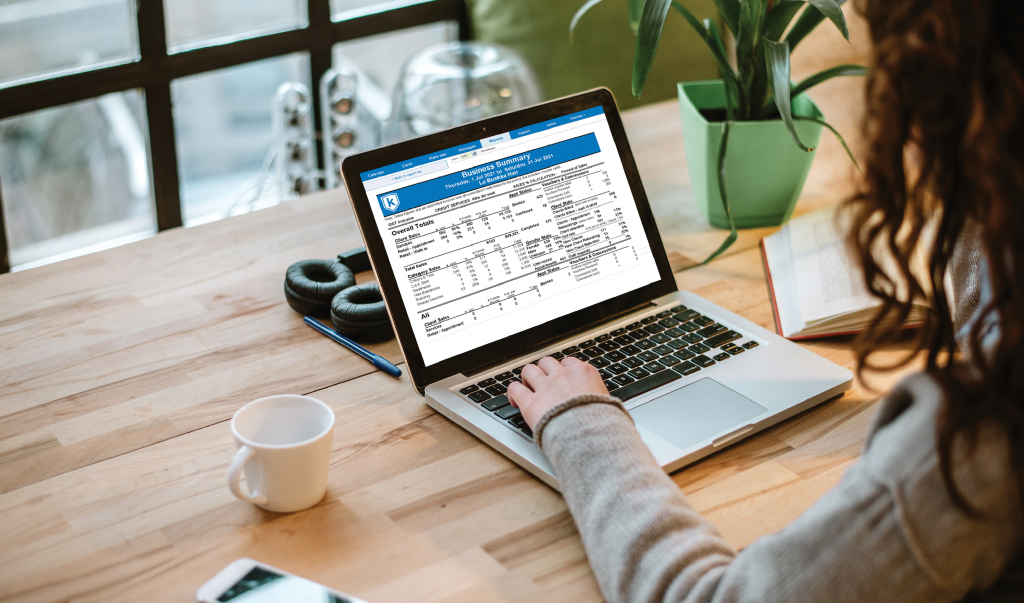The end of the financial year comes around at the same time every year, and yet each time it can seem like a surprise. The good news is if you’ve been using Kitomba it’s easy to get much of the information you need to keep your accountant and the tax man happy.
This article covers how to get ready for the end of the financial year using Kitomba Salon and Spa Software, by obtaining some of the information you’ll need about your business.
When running your reports, remember to select the dates for the financial year in your country. The financial year for New Zealand is from 1 April to 31 March, the United Kingdom is from 6 April to 5 April, and Australia’s financial year is from 1 July to 30 June.
Income and expenses
In preparation for the end of the financial year, Kitomba can tell you your income from sales and what you’ve spent with product suppliers.
Sales
Run your Business Summary Report excluding GST for the financial year to get the total value of sales for the year.
If you use the cash accounting method, you’ll need to use the Payments Received report in Kitomba 1, or refer to the payments received line in the Cash Drawer Takings report in Kitomba.
Purchases
If you’ve been using stock management in Kitomba, your Supplier Invoices Report in Kitomba 1 or the Stock Movement Summary in Kitomba will tell you how much you have spent with product suppliers for the year. Run this report excluding GST.

Assets
Your assets include your stock and money owed to you.
Stock
The Stock Value Report in Kitomba and Kitomba 1 will tell you the value of the stock you have on hand.
It is important to note the IRD does require a physical stock take to be completed on 31 March if the approximate stock value is over $10,000. If under $10,000, the Kitomba report is sufficient.
Completing stocktakes regularly will ensure you’re correctly reporting the value of the stock you have on hand. Check out this quick video that shows you how to perform a stocktake in Kitomba.
Money owed by clients
Running your Client Account Summary report will give you the balance of any outstanding client invoices in the “Accounts in Debit” section. Run this report for the last date of the financial year.
Cash
Cash on hand is another important asset that needs to be recorded on March 31. This includes petty cash, and till floats all of which need to be supplied to your accountant.
Liabilities
The liabilities you can find in Kitomba include money you owe to clients as well as the balance of outstanding vouchers and concessions.
Money owed to clients
The Accounts in Credit section in your Client Account Summary report will tell you how much money you owe your clients. Run this report for the last day of the financial year.
Vouchers
Run your Vouchers Outstanding report at the end of the last day of the financial year to quickly see the total value of vouchers that haven’t been redeemed.
Concessions
Your Concessions with Remaining Visits report will give you the value of outstanding concessions. Run this report at the end of the last day of the financial year.
Kitomba + Xero to make the financial year end even easier
Managing your money is even easier when you use Kitomba and Xero together. When you have the integration set up, Kitomba will automatically send your end of day cash drawer reconciliation to Xero.
This gives you accurate information about your income in your Xero accounts, helping you take even greater advantage of Xero’s time-saving features (especially at tax time). Find out more about Kitomba’s Xero integration.
Get ready for the end of the financial year
Remember to always talk to your accountant or business advisor if you’re unsure what you need to meet your end of financial year obligations. If you need to provide something from Kitomba and you’re unsure how to find it, search our online support guides or contact our support team.
If you haven’t been using Kitomba to manage your salon, spa, or clinic, get in touch for your free demo and we’ll find a solution that will help you to take your business to the next level and make the next financial year end as seamless as possible.
Read next:
- 5 tips to prepare your salon for the end of the financial year
- Finance terms every salon, spa, or clinic owner should know
- Small changes that can have a big impact on your finances
Editor’s note: This article was originally published on 28 May 2019 and was updated on 14 March 2023 for relevance and comprehensiveness.



